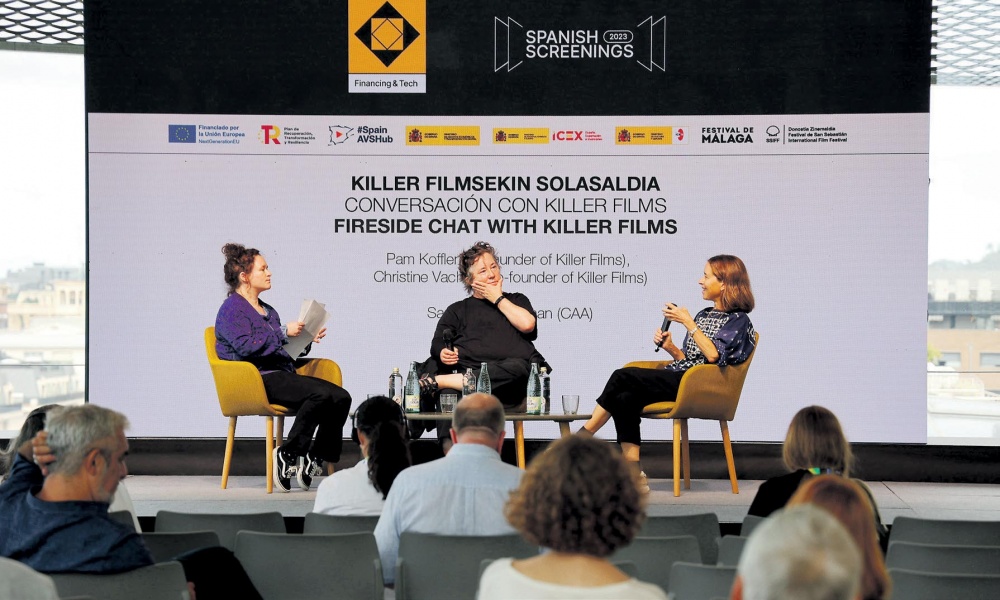The 2nd Creative Investors’ Conference, organized by the San Sebastian Festival and CAA Media Finance, took place at a historical moment: the end of the Writers Guild of America’s 148 day strike.
That set the tone of proceedings at the two-day confab and maybe added a slightly larger sense of forward momentum to its central issue at stake: a State of the Union take on the challenges and opportunities for the U.S and global film industry, from a market and producers’ perspective.
Multiple audience members, many from Spain and Europe, commented on their delight at the caliber of panelists and attendees, many at the top of their profession. Their answers to questions marshalled by CAA Media Finance’s Roeg Sutherland in one key panel and San Sebastian’s Wendy Mitchell on many more, were often direct and sometimes surprising but convincing or unguarded, which is what the audience of course was looking for.
Below, four preliminary takeaways from the Conference. Read Variety for more early today:
So How Has the WGA Deal Left Hollywood?
In its wake, “it seems like the SAG strike will be resolved, hopefully, relatively soon,” said Sutherland. At the Conference’s first round table, Amblin’s Jeb Brody sensed now “a real feeling of enthusiasm and creativity.” That said, “A lot of the issues that led to the strikes are still with us.” “The tension between streaming and theatrical remains, the larger studios working with their own streamers and trying to function well and make sure that that’s all making sense remains,” he added. “It’s going to be a couple of years, I think, until that gets really figured out.”
And Combined With the Pandemic?
“COVID and the strike accelerated trends already there before,” said Goodfellas’ Vincent Maraval. “Local cinema market share in every country is going up. Independent American cinema used to be global. [Now] it’s less global, and the market’s becoming more local. We need to become more open and curious about local cinema, because exceptions can come from anywhere,” he added. “Isn’t the world so-American centric anymore?” Sutherland asked, concurring.
New Talent Surge
10 of San Sebastian’s 16 main competition contenders are first or second-time directors. There’s “an enormous amount of fresh talent coming through, and those new voices, that for the most part don’t come from the U.S., have had a platform to speak because of the strikes, because there’s a lack of American product,” Sutherland reflected. “Buyers themselves are more open to new voices than they were, something fresh, new that might break through, that’s the key thing,” said Pete Czernin, at BluePrint Pictures.
Producer Pressure Points
One major consensus of the Conference was that the business has rarely been more complicated. “The pressure is how to achieve local market impact and yet for titles to travel as much as possible,” Matías Mosteirín, at Argentina’s K&S, said at a Producers Perspective panel on Wednesday.
In Spain, “the main challenge right now is an inflation in cost, due to the inflation of the number of projects. Our upside possibilities to make money are more limited, because we have to give away the main part of rights, and theatrical is suffering recently,” said Fernando Bovaira at MOD Producciones. U.K.-based Quiddity Films’ Emily Morgan agreed. “There’s a sense of being kind of squeezed from both sides. there’s not such financing available or pre-sales, but crew rates have gone up.” Little wonder Mitchell called producers “heroes” at the end of the session.
John Hopewell, Callum McLennan





